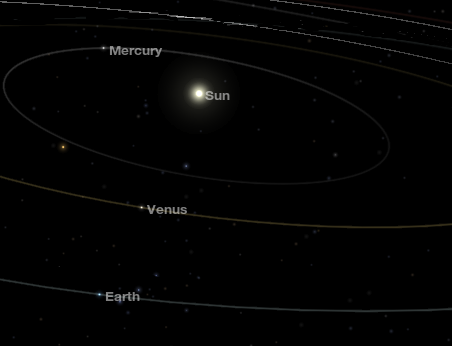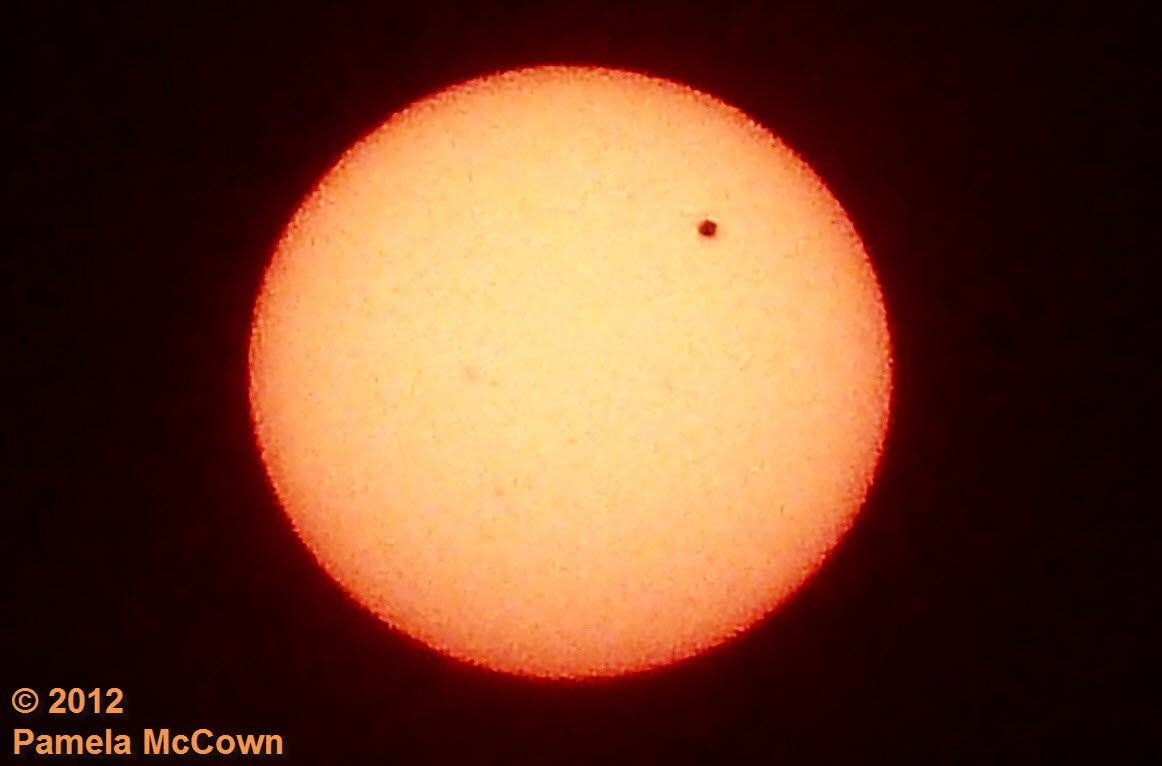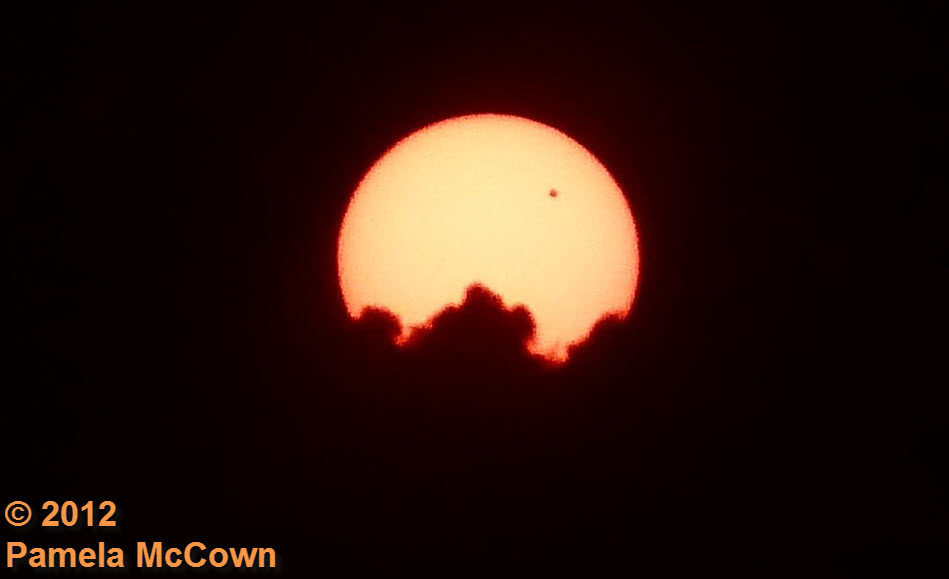From the Institute for Climate Education at A-B Tech:
Life is crazy, busy, I know. We get so focused on daily activities that we often forget what a wondrous and amazingly large universe we live in. Occasionally, we get a glimpse of that reality and it never fails to leave us awestruck. Such was the case June 5 when we were treated to a rare event during wich we were able to see one of the two inner planets of our solar system, Venus, pass in front of our Sun — an event called a transit. That means that the Sun, Venus and our Earth were all aligned as seen in the image below.

Image generated using NASA’s Eyes on the Solar System
Solar transits are rare events — the next transit of Venus won’t occur until 2117, but the real message of last evening’s event: We are so very small and so special in the vastness of space. Even though it’s almost 93 million miles away, our Sun is the driver of our seasons, our climate and the daily weather on this planet. In the image below, Venus, similar in size to our Earth, is nothing but a small dark dot as it crosses the face of the Sun.

The Sun set over Western North Carolina in mid-transit that night, with distant cumulus clouds starting to obscure the Sun. Bringing us back to our small planet, in a very big neighborhood.

Looking for some more perspective? Don’t forget that the Institute is holding a special event tomorrow night at The Health Adventure. This event is for all ages – but is especially geared for adults.
On Thursday, June 7, at 6 p.m., the Institute is presenting Eyes on the Earth: We ARE being Watched! Dr. Greg Wilson, former Director, NASA’s Mission to Planet Earth will utilize the amazing Science on a Sphere exhibit to tell the story of how NASA developed the Earth Observing System as a coordinated series of satellites for long-term global observations of the of our planet. The Health Adventure is offering a special reduced admission of $5 per person for the event. You’ll find more information here.



The comment above that Venus is a “small dark dot” is an overstatement. In the above images Venus is only 27 million miles away from Earth while the Sun is 93 million miles away. So Venus appears like a much larger dot during the transit images due to its closer proximity to us. If Venus were at the same distance from us as the Sun, its “dot” would be less than one-third the size of the one in the images above.